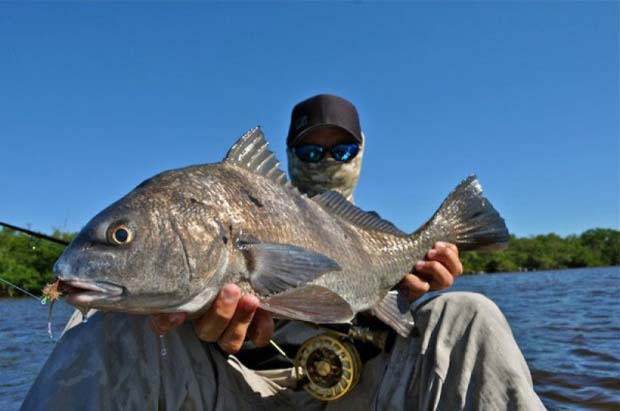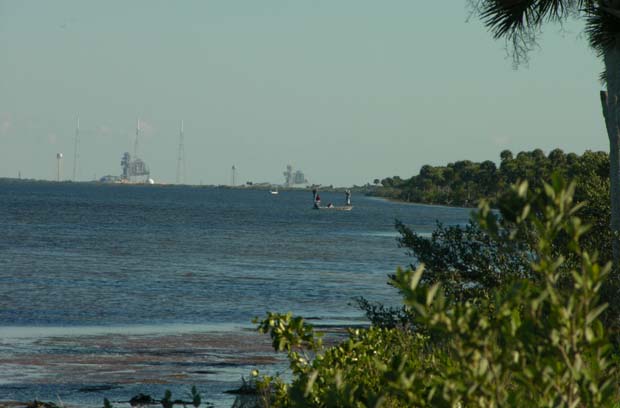By Travis Thompson
Shiloh is no place for a launch complex
 [dropcap]S[/dropcap]pace Florida is a public body created by the State of Florida to foster the “growth and development of a sustainable and world-leading space industry in Florida.” Given Florida’s long history of hosting our nation’s space flights, the existing facilities and talent along our Space Coast and the major employment losses suffered there with the reduction of federal funding of our nation’s space program, the creation and functions of “Florida’s aerospace economic development agency” are surely worthwhile. CCA Florida applauds the effort to bring commercial space industry to our state for all of the economic benefits it will surely bestow. Likewise, it seems prudent to focus on the area surrounding NASA’s facilities already in existence and the wealth of local talent that exist there.
[dropcap]S[/dropcap]pace Florida is a public body created by the State of Florida to foster the “growth and development of a sustainable and world-leading space industry in Florida.” Given Florida’s long history of hosting our nation’s space flights, the existing facilities and talent along our Space Coast and the major employment losses suffered there with the reduction of federal funding of our nation’s space program, the creation and functions of “Florida’s aerospace economic development agency” are surely worthwhile. CCA Florida applauds the effort to bring commercial space industry to our state for all of the economic benefits it will surely bestow. Likewise, it seems prudent to focus on the area surrounding NASA’s facilities already in existence and the wealth of local talent that exist there.
Space Florida recently sent a request to the U.S. Department of Transportation and NASA for the conveyance of 150 acres of land for use by Space Florida as a public airport/spaceport. The subject lands are located in an area that was known, before the Federal government acquired for the space program, as the community of Shiloh. Space Florida subsequently issued a “Request for Information for the Proposed Shiloh Launch Complex,” in which it states that it is “proposing the establishment of a commercially developed, commercially operated launch complex.”
Shiloh lies in a narrow strip of land between the banks of the northern end of the Indian River Lagoon to the west, and the banks of the Mosquito Lagoon to the east, which is within the Merritt Island National Wildlife Refuge and across Mosquito Lagoon from Canaveral National Seashore, generally at the northern end of the Kennedy Space Center. In its request to the U.S. DOT and NASA, Space Florida stated that the 150 Shiloh acres are “surplus” and “excess to the needs of the U.S. Government” and “are not otherwise needed for public use.” The fact that the Shiloh lies within the Merritt Island National Wildlife Refuge was not mentioned.
Nor was the fact that the area encompassing Mosquito Lagoon, the northern reaches of the Indian River Lagoon, the Canaveral National Seashore and Merritt Island National Wildlife Refuge are essentially the most pristine lands and waters left along Florida’s east coast. The area is also essential habitat for many birds and aquatic animals, some of which are endangered or federally protected. A large number of anglers, hunters, bird watchers, manatee watchers, paddlers and other wildlife and outdoor enthusiasts consider the area a primo destination for their avocations. The economic benefit from those enthusiasts to the State of Florida and those who live in the vicinity is immense, which is to say nothing of the tremendous recreational benefits conferred upon those enthusiasts by experiencing the area in what is largely its natural condition. Indeed, the Merritt Island National Wildlife Refuge was designated in 1963 by the U.S. Fish & Wildlife Service for use “as an inviolate sanctuary – for migratory birds.”
Meanwhile, Kennedy Space Center (KSC) sits nearby, the fate of much of its facilities unknown. Several capable launch facilities already exist there and are now sitting idle. In fact, one was used by a potential beneficiary of the proposed Shiloh site, Space X, which recently launched a rocket and spacecraft from KSC. NASA began exploring ways to increase future commercial use of the Shuttle Landing Facility at KSC well before the end of the Shuttle Program, and a Final Environmental Assessment was issued in 2007 that addresses expansion of those existing facilities.
Unfortunately, this is not the first time this area has been proposed for a new launch site. In 2008, NASA itself proposed 2 alternative new launch sites very near Shiloh. At the time, Coastal Conservation Association Florida and other groups protested loudly, imploring NASA to find a way to use the facilities at KSC rather than imposing the enormously adverse environmental impacts a new launch facility would create. That proposal by NASA did not proceed, nor should this one.
The development of the Shiloh site will surely involve a very time-consuming process, including the preparation and approval of an environmental impact statement required under the National Environmental Policy Act, as well as a number of other permits. The ultimate issuance of such permits would seem questionable in light of the tremendous impact the proposed launch complex would have – construction and post-development traffic and their attendant noise, smoke, heat and noise from the launches, and storm water runoff, among them. What of access by the public to nearby lands and waters – including the Intracoastal Waterway? This heavily travelled waterway would likely be closed before, during and after launches. Such impacts and the aesthetic degradation may well lead to declining visits by the anglers, birders and other outdoor enthusiasts, which could then result in the loss of existing jobs. Why not avoid all of this and find a way to use the existing facilities at KSC?
CCA Florida has questions to ask of Space Florida and NASA, but in sum, we need to know why the existing, mostly idle facilities at KSC cannot be used to develop the same commercial launch facility that is being proposed for Shiloh?
For additional information please contact Ted Forsgren at 407-702-3567 or tforsgren@ccaflorida.org







